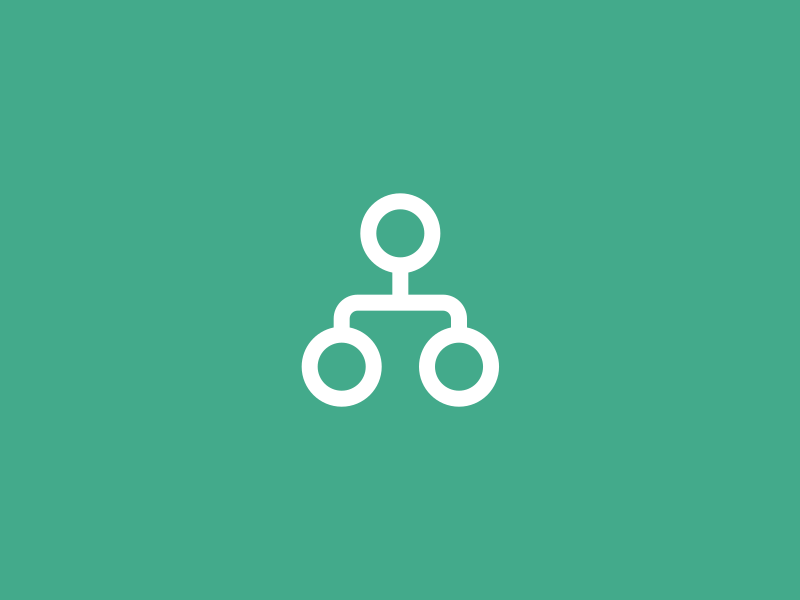Benefits of an Employee Directory
A well-implemented employee directory can benefit both the employees working at your organization, and the organization itself.

From boosting employee communication to improving onboarding, connecting remote teams, helping people find expertise, and assisting your HR functions, a good quality employee directory can bring multiple benefits to all your departments.
Here are some of the main employee directory benefits we talk about:
1. An employee directory improves workplace communication and collaboration
A large part of what we do at work involves other people. But often, it's hard to know who's who, and finding the right person you need to speak to can be challenging.
This becomes more of a problem as your organization grows.
If it were easier to connect with the right people in your company you would be able to more easily get the information you're looking for.
An employee directory solves this challenge by enabling you to search and connect with anyone at any time and from anywhere. This improves communication and collaboration, and helps your employees work better together.

2. An employee directory helps build better work relationships
An important part of the employee experience is connecting with your coworkers on a more personal level.
An employee directory helps everyone learn about the people they work with every day, and perhaps more importantly, it helps them find out more about the people they'd like to get to know.
Most employee directory profiles include a bio ("about me"), interests, skills, birthday, work anniversary, location, and of course a photo.

Other information that can help people get to know one another includes pronouns, nicknames, work experience, education, projects, languages, social media links and fun facts.
Having this type of information available gives people a way to build relationships and get to know their colleagues in ways they might not otherwise have.
3. An employee directory helps people find expertise
Some employee directories include a skills directory that helps employees search for coworkers with specific skillsets or knowledge.
This can be really useful in collaborative environments that rely on the sharing of knowledge between employees.
Workers often need an expert to assist with a project or to find someone who knows about a certain topic. And management sometimes needs to review the capabilities of their teams or review their company's skills inventory.
A skills directory (or skills database) can go a long way to helping people discover and share expertise within your company.

4. An employee directory helps your remote teams feel more connected
Organizations are embracing remote work, and a greater number of people are working from home and from shared workspaces or satellite offices.
But, when you're working remote, feeling like a part of the team can be a challenge. And from a business perspective, building your company's culture is hard when people aren't in the same physical location.
An employee directory gives everyone in your organization a "digital desk" where others can find them, call or chat with them, learn more about them, and see where they fit in, no matter where they're working from.
5. An employee directory assists your HR team
An employee directory helps your Human Resources team and your office managers to be more effective at assisting your employees.
That's because all your useful employee profile information is in one place, easily searchable.
HR tools can help, but since they're typically only available to the HR department, these systems quickly become out of date when people can't update their own profile information.
Another big plus is that an employee directory helps your HR team to effectively manage the org chart and to get a birds-eye view of where everyone fits into your company's organizational structure.

6. An employee directory improves onboarding
Helping your new hires get on-boarded is an important task. In that first month or two your new recruits are trying to figure out who's who, who does what, and where everyone fits in.
An employee directory helps by giving your new hires a place to easily find and learn about the people on their team.
They can learn where people sit in the org structure, they can get acquainted with your management team, they can lookup the names names and faces of people they need to work with, and they can see how your organization and its offices and departments are structured.
With a modern employee directory, onboarding your new hires becomes much easier.
Common Uses of an Employee Directory
A modern employee directory enables you to do things you couldn't do before, since it contains information about your coworkers that you can't really find anywhere else.
There are hundreds of tasks and use cases like finding expertise, putting names to faces, discovering who's who in your work network, remembering coworker birthdays, finding office locations, identifying managers, and many more, that can be achieved with an employee directory solution.
Below you can discover some of the common ways in which employee directories are being used in organizations today.
What is an employee directory used for?
🤝 Getting to know your colleagues better. One of the main reasons people spend time browsing their company's employee directory is to simply learn more about their coworkers; names, faces, bio's, interests and other information that helps them relate to the people they work with.
📞 Looking for contact information. People don't want to be rummaging through email signatures looking for phone numbers.
🏢 Browsing your company's organizational structure and learning who fits where in the org chart.
👷♂️ Looking for a colleague's job title, seniority, and who they report to.
🎅 Finding out what your coworkers look like. Many remote workers have never met their colleagues in person, and new hires want to learn the names and faces of the people they work with.
📍 Discovering where your coworkers are located or where they're working from.
🔨 Finding people that have the skills and expertise you need for a project.
🤹 Looking for people with common interests and hobbies.
🎂 Keeping track of birthdays so you know when it's cake-in-the-office day.
What questions can an employee directory answer?
Depending on your role in your company you may need to answer certain questions to get your job done, and a well-designed employee directory can help.
Here are some questions an employee directory can help you answer:
🙋♂️ "Who is Maggie's assistant?"
📞 "What's Debbie's extension?"
👀 "Who worked on that project two years ago?"
👴🏻 "Was it Bill or Bob I met in Accounting last week?"
🏢 "How big is our Marketing department?"
👨💻 "Who can install the printer for me?"
📅 "Is Jasper in the office today?"
👩⚕️ "How many other doctors work in this wing?"
👨🏾💼 "Any other sales people in this office?"
🔖 "What was Sam's last name again?"
🎂 "Who has birthdays this week?"
💂🏻♂️ "Who reports to me?"
🚴♂️ "Anyone in this office into cycling?"
🌎 "Which office is Jason working from?"
🧔 "Who here is skilled in website design?"
🗽 "What's the phone number of the New York office?"
👩🏽🦳 "What does Amy's manager look like?"
🐦 "Anyone else on my team have a Twitter account?"
🤔 "Actually, who is my boss's boss's boss?"
These are just a few of the general use cases for employee directories. There are hundreds of specific uses for employee directories that span multiple job roles, functions, and industries.


